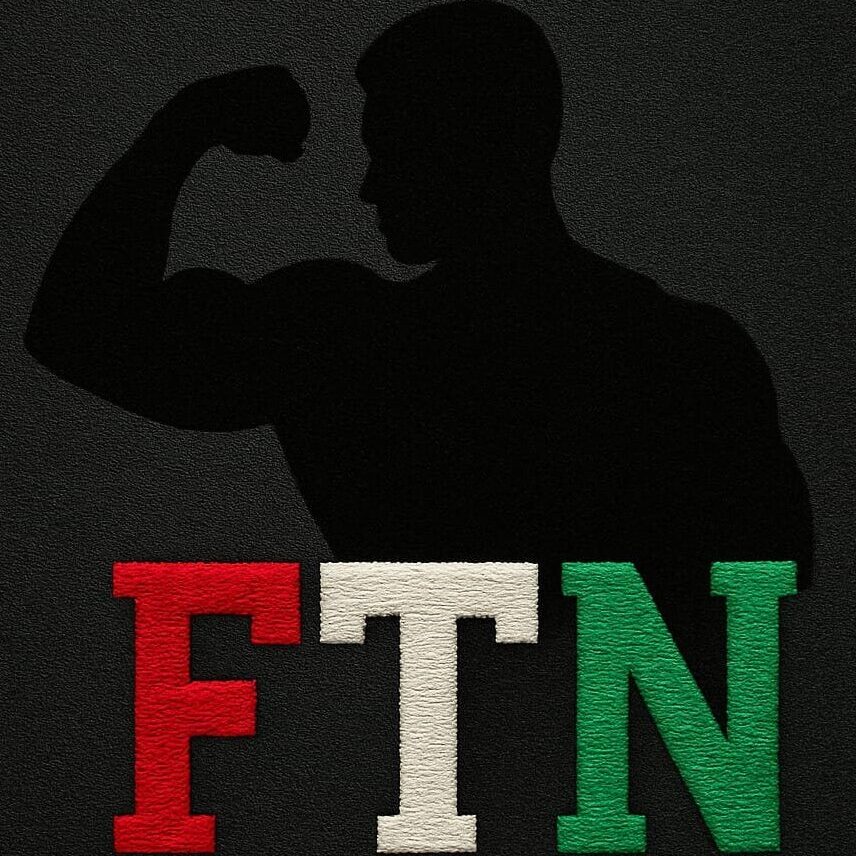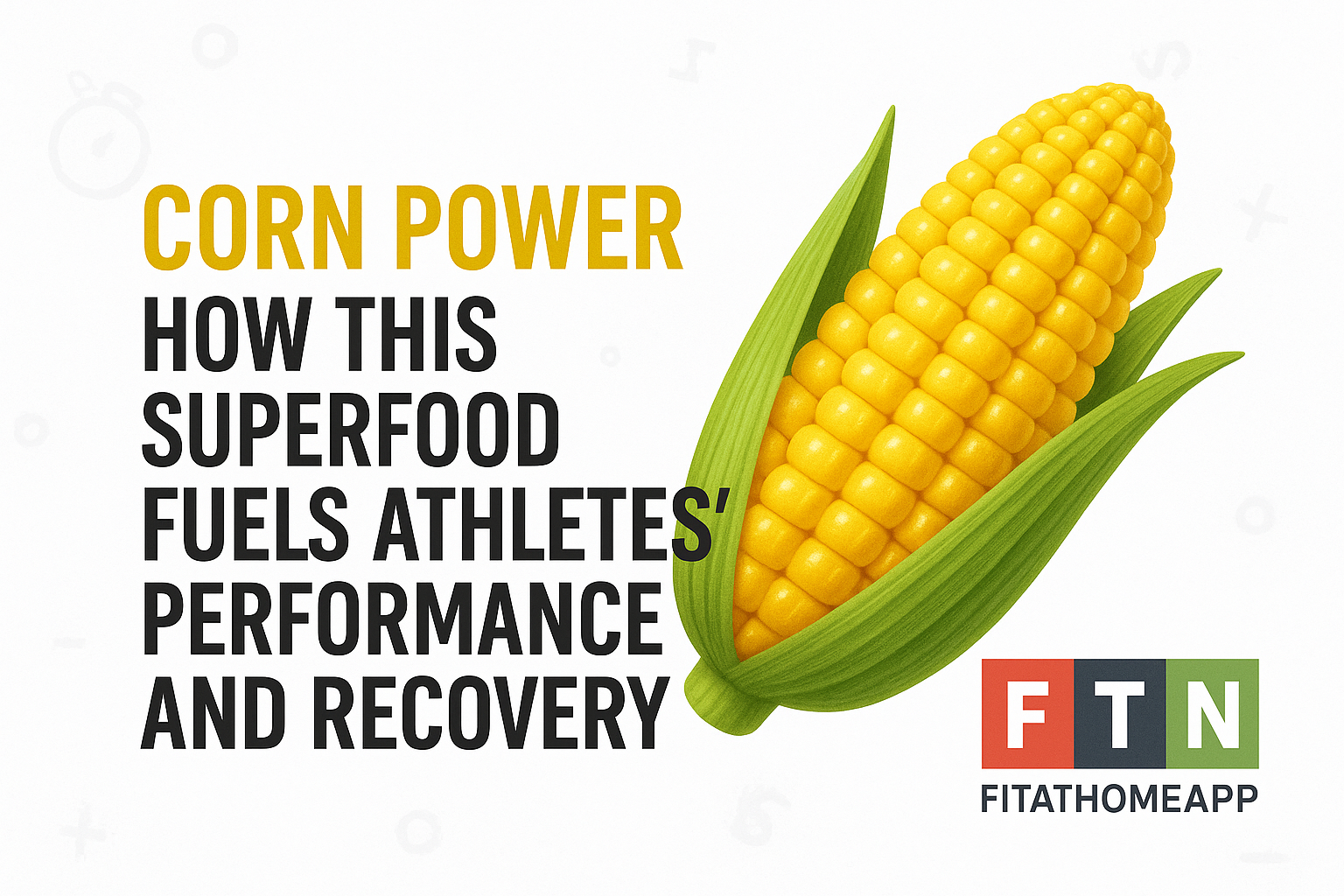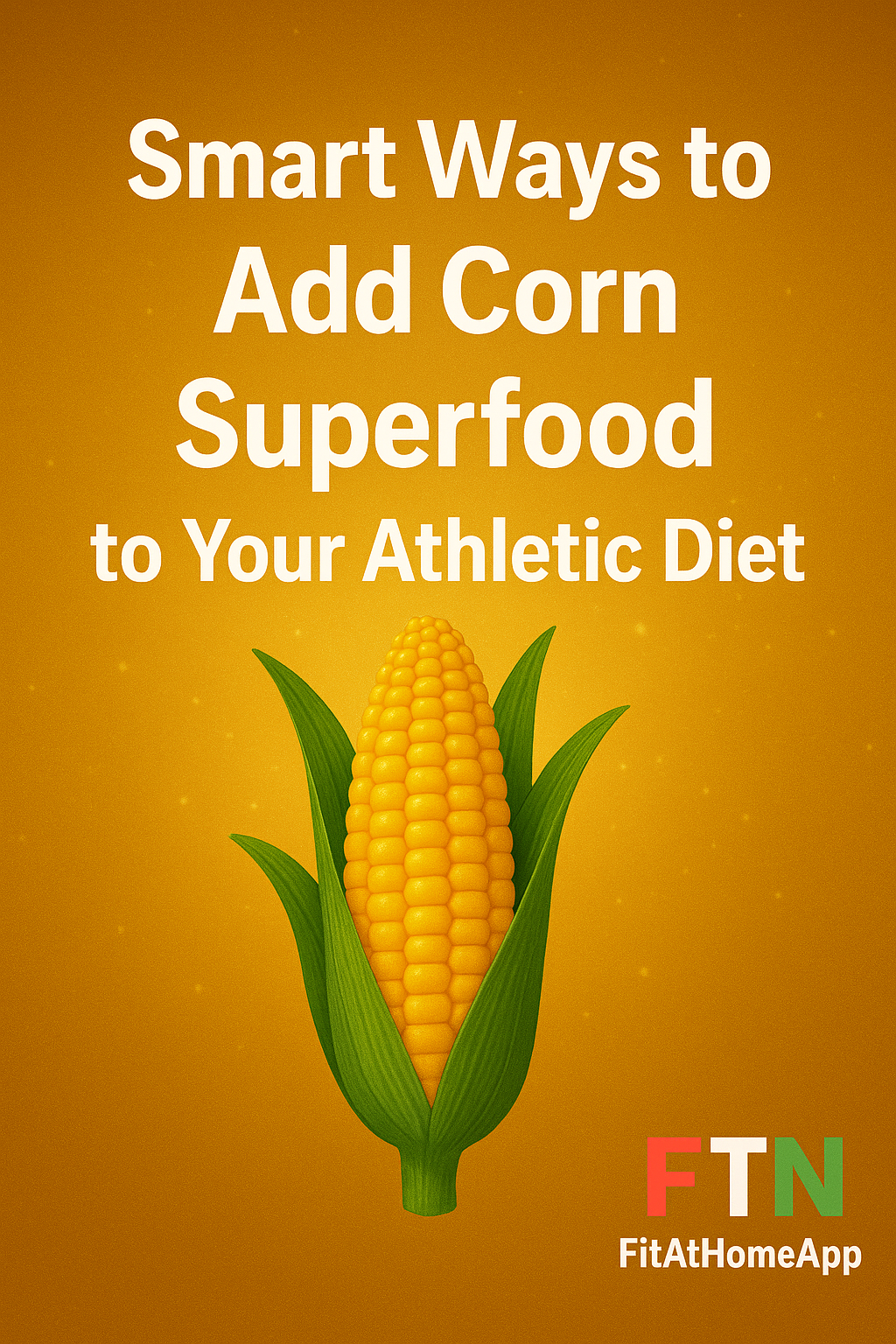Why Corn superfood Deserves a Spot in Every Athlete’s Diet
Corn isn’t just a summer BBQ favorite — it’s one of the most underrated superfoods fueling American athletes today. This bright yellow grain, packed with energy-giving carbs, fiber, and essential vitamins, is becoming a go-to choice for those who train hard and recover even harder. For centuries, corn was a staple in Native American diets, and now it’s making a powerful comeback as a key player in modern sports nutrition.
From fresh corn on the cob to tortillas, popcorn, and cornmeal, the ways to enjoy this nutrient-dense food are nearly endless. It’s affordable, widely available, and easy to integrate into both pre- and post-workout meals. But more importantly, corn offers real, science-backed benefits for performance, endurance, and recovery.
In this article, we’ll dive into the nutritional power of corn, how it supports energy production and muscle recovery, and why more athletes are turning to this humble grain to fuel their goals.
A Look Inside Corn: What Makes It a Superfood?
At first glance, corn might seem like a simple food, but it’s loaded with valuable nutrients that play essential roles in athletic health. A single cup of cooked corn delivers:
30+ grams of complex carbohydrates – perfect for fueling workouts
3.5 grams of dietary fiber – helps maintain stable energy and gut health
Vitamins B1 (thiamine), B3 (niacin), and B9 (folate) – essential for energy metabolism and muscle recovery
Magnesium and potassium – crucial minerals for hydration, nerve function, and preventing muscle cramps
Antioxidants like lutein and zeaxanthin – protect cells from exercise-induced oxidative stress
Unlike simple sugars, the carbs in corn are complex, meaning they break down slowly to provide sustained energy — something every athlete needs during long training sessions or competitions.
How Corn Helps Power Performance
Carbohydrates are the body’s preferred fuel during exercise, and corn delivers them in a natural, nutrient-rich package. During high-intensity workouts, your body burns through glycogen (stored carbs) quickly. Consuming corn beforehand helps fill up those glycogen stores so you can perform at your best.
What’s more, corn doesn’t just give you a quick boost — it helps you maintain energy throughout your workout. Its fiber content slows down digestion just enough to prevent sugar crashes while keeping you fueled. That’s especially helpful for endurance athletes like runners, cyclists, and swimmers.
Pro Tip:
Athletes who eat a corn-based meal 1–2 hours before training report longer endurance, better focus, and reduced fatigue compared to those relying on quick sugars alone.
Corn and Recovery: Bouncing Back Faster
After intense exercise, your body needs nutrients to recover, repair muscles, and restore energy. Corn helps with all three.
Carbs in corn help quickly replenish glycogen stores.
B-vitamins aid in energy metabolism, helping your body rebuild faster.
Magnesium supports muscle relaxation and reduces cramping.
Antioxidants help fight inflammation and muscle soreness.
Including corn in your post-workout meals can speed up recovery and prepare you for your next session. Many athletes add corn to post-exercise bowls, smoothies, or hearty soups to refuel effectively.
Smart Ways to Add Corn superfood to Your Athletic Diet
Corn is incredibly versatile — you don’t need to rely on supplements to get its benefits. Here are some easy ways to enjoy it:
Corn and black bean salad: A protein-packed, fiber-rich side dish.
Cornmeal pancakes: A pre-workout breakfast rich in slow-burning carbs.
Grilled corn on the cob: Perfect for lunch or dinner with lean protein.
Quinoa and corn bowls: Great for recovery meals with added vegetables.
Popcorn (air-popped): A healthy, crunchy snack with fiber and antioxidants.
Corn tortillas are also great for wraps and tacos, especially when paired with grilled chicken, eggs, or beans.
Corn-Based Sports Products: Fueling Innovation
The sports nutrition industry is catching on to corn’s benefits. Many energy bars, recovery shakes, and carb-loading products now include corn derivatives like corn syrup solids, maltodextrin, or corn protein. While whole corn is always the better option, these products can be helpful during competition or long-distance events when convenient fuel is needed.
You’ll even find gluten-free athletes turning to corn as a safe grain alternative to wheat, oats, or barley.
Corn and Sustainability: A Win for Athletes and the Planet
Corn is not just good for the body — it’s also better for the planet. Compared to more resource-intensive crops, corn requires less water and grows abundantly across the U.S., supporting local farmers and reducing transportation emissions. Choosing corn-based meals means supporting more sustainable, locally grown food sources — a win-win for performance and the environment.
Athletes Who Swear by Corn
Don’t just take our word for it. Many professional athletes are now integrating corn into their routines.
“Since adding cornmeal pancakes to my pre-run breakfasts, I’ve noticed better energy and less stomach discomfort.”
— Jessie Moore, Marathon Runner
“Corn tortillas with beans and avocado are my go-to post-workout meal. They keep me full, help me recover, and taste amazing.”
— Daniel Kim, CrossFit Athlete
These testimonials reflect what the research shows: corn works — not just as fuel, but as a full-body recovery ally.
Final Thoughts: Is Corn Right for You?
If you’re an athlete looking for a natural, affordable, and effective way to improve your nutrition, corn deserves a place on your plate. It provides steady energy, supports muscle recovery, and fits perfectly into any balanced meal plan — whether you’re training for a marathon or just hitting the gym after work.
Corn is more than a comfort food; it’s a performance food.
Ready to fuel your workouts naturally?
Try adding corn to your next meal and feel the difference in energy, recovery, and taste.
Personal Take on the Video
This engaging video by Guru Mann outlines the health benefits of sweet corn in a clear, athlete-relevant manner. It covers key themes such as corn’s complex carbohydrates, fiber content, and micronutrients
Complex Carbs for Endurance Corn provides ~30g of energy-sustaining carbs per cup to support long workouts.
Muscle & Nerve Health Support Potassium and B-vitamins in corn aid hydration, nerve signaling, and recovery.
Antioxidant Defense Lutein and zeaxanthin help protect against oxidative stress from exercise.
Gut Health & Metabolism Fiber in corn maintains stable energy and supports digestive health.
Affordable & Sustainable Fuel Corn is budget-friendly, widely accessible, and supports local agriculture.
🌽 Corn vs. 🫑 Bell Peppers: A Nutritional Showdown
While both corn and bell peppers are colorful staples in many cuisines, they offer distinct health benefits and can serve different roles in a balanced diet. Let’s break down the key differences and advantages of each:
🔸 1. Nutritional Profile
| Nutrient | Corn (1 cup cooked) | Bell Pepper (1 cup raw, chopped) |
|---|---|---|
| Calories | ~140 kcal | ~45 kcal |
| Carbohydrates | ~31g (mostly complex carbs) | ~9g (mostly from natural sugars) |
| Fiber | ~3.5g | ~3g |
| Protein | ~5g | ~1.5g |
| Vitamin C | ~17% DV | Over 150% DV (especially red peppers) |
| Vitamin A | Moderate | High (especially red/orange peppers) |
| Antioxidants | Lutein, Zeaxanthin | Beta-carotene, Capsanthin |
🔸 2. Health Benefits
- Corn:
- Great source of complex carbs for long-lasting energy.
- Contains B vitamins (thiamine, folate) for energy metabolism.
- Lutein & zeaxanthin promote eye health.
- Supports muscle recovery post-exercise due to magnesium and carbs.
- Bell Peppers:
- Exceptionally high in vitamin C, boosting immunity and skin health.
- Rich in antioxidants with anti-inflammatory properties.
- Low in calories — ideal for weight management.
- Supports eye health with high vitamin A and carotenoids.
🔸 3. Culinary Versatility
- Corn is perfect in:
- Salads, soups, tortillas, grits, popcorn, or roasted on the cob.
- Great for pre/post workout meals due to energy-dense carbs.
- Bell Peppers are used in:
- Stir-fries, salads, stuffed dishes, sandwiches, or grilled.
- Excellent raw or cooked, and pair well with lean proteins.
✅ Final Verdict:
- Choose corn if you need energy, complex carbohydrates, and muscle recovery support — especially ideal for athletes.
- Choose bell peppers if you’re looking for a low-calorie, vitamin-rich option that boosts immunity and adds color and crunch to meals.
🧠 Pro Tip: Combine both in your meals (e.g., corn and pepper salad) for a nutrient-rich, flavor-packed dish that covers all your bases!
🌽 Curious About Corn? Here Are the Answers You Didn’t Know You Needed!
Q1: Is corn really a vegetable or a grain?
👉 Great question! Corn is actually both. When it’s fresh and eaten off the cob, it’s considered a vegetable. But once it’s dried (like popcorn or cornmeal), it’s classified as a whole grain. So you get the best of both worlds!
Q2: Can corn help athletes perform better?
👉 Absolutely! Corn is rich in complex carbs, which provide steady energy — making it a great pre-workout fuel. Plus, its magnesium and B-vitamins help with muscle recovery and endurance.
Q3: Is corn high in sugar?
👉 Not as much as you’d think. While corn tastes sweet, its sugar content is natural and much lower than processed snacks. Plus, its fiber helps slow down digestion, keeping blood sugar stable.
Q4: What makes corn a “superfood”?
👉 Corn earns that title thanks to its combo of antioxidants (like lutein & zeaxanthin), fiber, and essential nutrients like folate and potassium. It’s not just filler — it’s functional fuel!
Q5: Can corn fit into a healthy diet?
👉 100%! Whether you’re gluten-free, vegetarian, or just health-conscious, corn is incredibly versatile. From grilled corn and tacos to cornmeal pancakes and popcorn, it fits almost any diet.
✅ Try this next time: Add roasted corn to your salad or use corn tortillas for your wraps — your taste buds (and muscles) will thank you.


